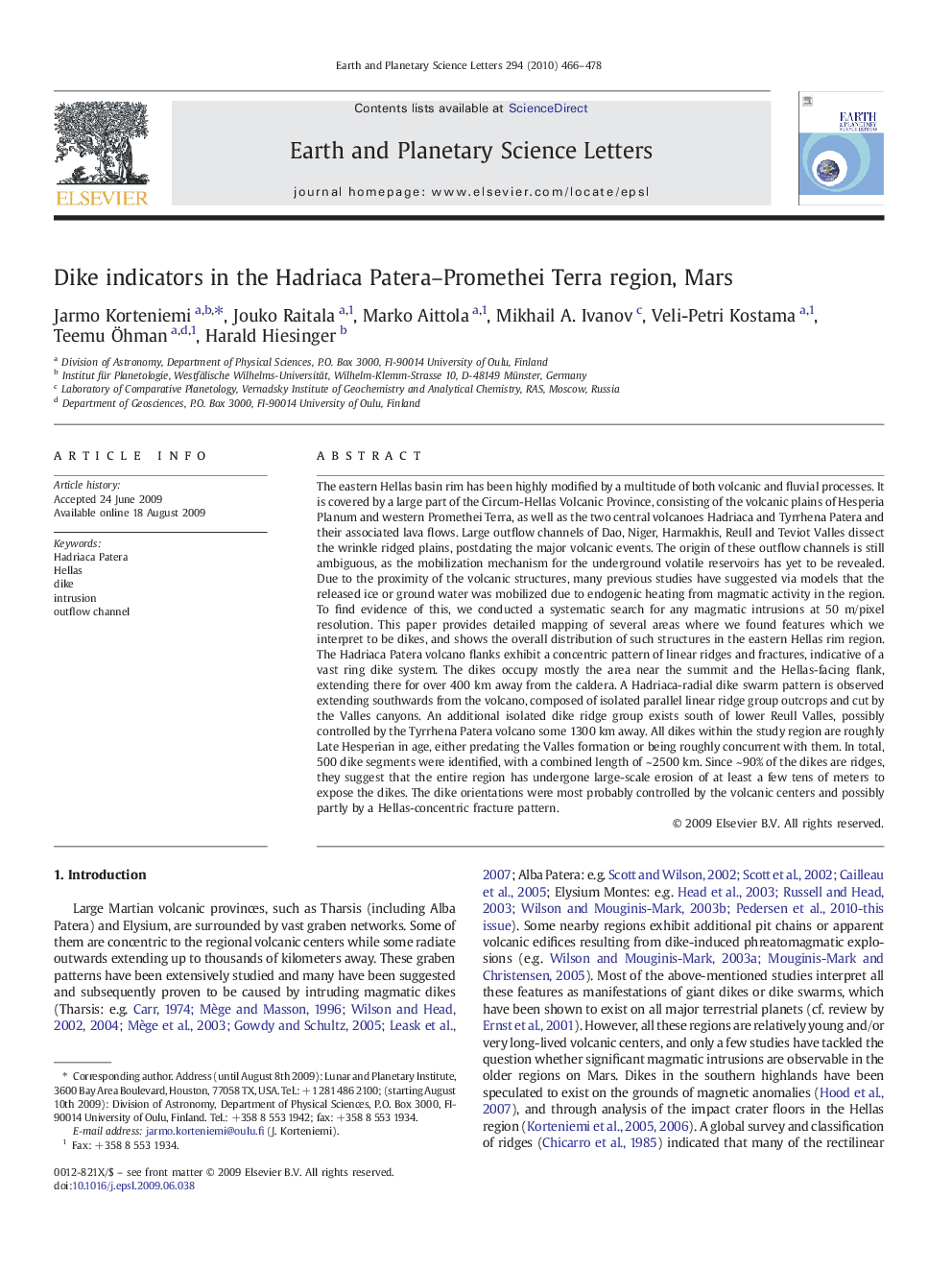| Article ID | Journal | Published Year | Pages | File Type |
|---|---|---|---|---|
| 4678486 | Earth and Planetary Science Letters | 2010 | 13 Pages |
The eastern Hellas basin rim has been highly modified by a multitude of both volcanic and fluvial processes. It is covered by a large part of the Circum-Hellas Volcanic Province, consisting of the volcanic plains of Hesperia Planum and western Promethei Terra, as well as the two central volcanoes Hadriaca and Tyrrhena Patera and their associated lava flows. Large outflow channels of Dao, Niger, Harmakhis, Reull and Teviot Valles dissect the wrinkle ridged plains, postdating the major volcanic events. The origin of these outflow channels is still ambiguous, as the mobilization mechanism for the underground volatile reservoirs has yet to be revealed. Due to the proximity of the volcanic structures, many previous studies have suggested via models that the released ice or ground water was mobilized due to endogenic heating from magmatic activity in the region. To find evidence of this, we conducted a systematic search for any magmatic intrusions at 50 m/pixel resolution. This paper provides detailed mapping of several areas where we found features which we interpret to be dikes, and shows the overall distribution of such structures in the eastern Hellas rim region. The Hadriaca Patera volcano flanks exhibit a concentric pattern of linear ridges and fractures, indicative of a vast ring dike system. The dikes occupy mostly the area near the summit and the Hellas-facing flank, extending there for over 400 km away from the caldera. A Hadriaca-radial dike swarm pattern is observed extending southwards from the volcano, composed of isolated parallel linear ridge group outcrops and cut by the Valles canyons. An additional isolated dike ridge group exists south of lower Reull Valles, possibly controlled by the Tyrrhena Patera volcano some 1300 km away. All dikes within the study region are roughly Late Hesperian in age, either predating the Valles formation or being roughly concurrent with them. In total, 500 dike segments were identified, with a combined length of ~ 2500 km. Since ~ 90% of the dikes are ridges, they suggest that the entire region has undergone large-scale erosion of at least a few tens of meters to expose the dikes. The dike orientations were most probably controlled by the volcanic centers and possibly partly by a Hellas-concentric fracture pattern.
